Constantine Soo (Dagogo publisher) recently asked me to write an article focused on the most significant phono cartridges over the last 80 years. I thought it would be a lot of fun but would require a great deal of research. At first, we thought of one or perhaps two articles focusing on early classics and more current designs. Once I started my research, I realized that to do any justice to the topic, it was going to take more articles than we had thought. There are just too many significant cartridges, and each has its own history that deserves to be told.
So, this is the first of many articles. Where to start I left to chance. I reached into my memory to compile a list of cartridges I personally find significant, some being personal favorites and some not so much, but each is significant. I sent out requests for historical information by e-mail to as many as I could. Some of my choices are out of business, in some cases for decades; for them I will rely on my memory and some industry friends.
Back in 1968, my very first HiFi turntable was a used Dual 1209SK with a Shure M55E cartridge first introduced about five years earlier. Although I only used the Shure for about 4 or 5 weeks before replacing it with a Stanton 681EE, it got me started in what has turned out to be 52-plus years as an audio professional and hobbyist.
I will admit that Shure is not my favorite cartridge company, but it is without a doubt one of the most influential companies in the history of HiFi. On April 15, 2020, I conducted a phone interview with Shure’s corporate historian, Michael Pettersen. The following is the result of our phone conversation.
Q: Michael, can you tell me a little about yourself?
A: I have been with Shure for 44 years. I started in 1976 and have had five different careers at Shure. I am a professional musician and still a working musician with a degree in music from the University of Illinois, but my hobby has always been electronics. I had planned on becoming a Professor of Music, but discovered that wasn’t going to work out. So, because of my hobby, I approached Shure Brothers and was hired in the sales department and eventually became the Sales Manager, but realized I wasn’t really cut out for that. Then I got into product management and eventually became Product Manager. I then went into Advance Product Planning, looking at new technologies. In 1993, I created the Applications Engineering department. At the same time, I was Shure’s liaison to the White House and worked with Presidents Bush (both), Clinton, and Obama. Now, I am Shure’s Corporate Historian.
Q: I know Shure was founded back in 1925 by Sidney N. Shure in Chicago as the Shure Radio Company and produced Radio Parts Kits.What was Shure’s first finished product?
A: That would have been in 1932, a carbon microphone. In 1928 the name was changed to Shure Brothers when his brother joined him. In 1929, Shure started distributing microphones from Universal and Ellis Electrical Labs but decided in 1932 he could build his own.
Historical Note: In 1933, Shure begins to supply OEM crystal pickups to various manufacturers of record players.
Q: Shure has been making cartridges for turntables since 1937, along with tonearms. Tell me why Mr. Shure decided to enter the cartridge business?
A: He was buying crystal elements from Brush Development Corporation and decided to expand the business.
Q: I remember his first was the 99A Zephyr Arm and crystal cartridge. Can you tell me something about that combination?
A: In 1937, Shure introduced the model 99A Zephyr—a balanced tracking crystal record reproducer. This product featured a full floating, non-resonant tone arm; low “needle-point” impedance; and “needle tilt” that kept the stylus in true alignment with the record groove. It was styled after the Zephyr train of that period.
Historical Notes: In 1951, Shure offered a complete line of crystal and ceramic pickups. In 1955, Shure introduced the ML44 Series, known as the Music Lover’s Cartridge. It was a ceramic pickup with a twin-lever coupling and the ability to play three speeds of records. Two styli (1 mil and 3 mil) were interchangeable by the user.
Q: Shure introduced the first stereo moving magnet cartridge, the model M3Dstereo Dynetic Cartridge, in 1958, with a separation of 20 dB at 20 kHz. Tell us more about it.
A: The M3D was Shure’s first stereo moving magnet design. Shure and Columbia worked in secret for three years during the development of the first Stereo LP. Which is why they both came out at the same time. There was a downside. Ben Bauer, Shure’s VP of Engineering at the time, was our contact with CBS and CBS hired him away from us.
Q: The V15 was perhaps one of the world’s most successful audiophile cartridges.
Historical Note: In 1964, the V15 Stereo Dynetic High Fidelity Cartridge is first sold. It featured a 15-degree vertical tracking angle, a bi-radial elliptical stylus (0.0002 x 0.0009 inch), and was subjected to exacting quality control and inspection that were unique in the industry.
What do you think propelled the V15 to become so popular?
A: The V15 was introduced in 1964. The name described the 15 degree vertical tracking angle and was eventually standardized for the industry. Its sonic quality put us on the map as an audiophile cartridge manufacturer.
History of the V15: V15 1964-1966, V15 Type II 1966-1970, V15 Type II Improved 1970-1973, V15 Type III 1973-1978, V15 Type IV 1978-1982, V15 Type V 1982-1983, V15 Type V-MR 1983-1993, V15 Type VxMR 1996-2005
Shure is privately held and has the ability to do things other companies can’t or won’t do. They have a complete archive with at least one of every product they have ever made since 1932.
Q: When did Shure change its name to Shure Incorporated?
A: For the 75th anniversary in 2000.
Historical Note: In 1966, the V15 Type II superseded the V15. This new V15 was designed using an analog computer and introduced the concept of Trackability—the ability to maintain contact between the stylus tip and the record groove at all frequencies using a minimum tracking force. A flip-action stylus guard was another new feature.
Q:What was Shure’s unique technology of the time?
A: The V15III with its flat response and trackability. It really was the trackability that made it special, and crazy popular. The Type IV introduced the dynamic stabilizer.
Historical Note: Once the V15-V was introduced, the IV design was reused for the M97. In 1973, the V15 Type III debuts with a uniformly flat, unaccented, uncolored frequency response. This was accomplished by reducing the stylus mass by 25% and by employing a new laminated pole piece design.
Q: What innovations is Shure known for?
A: The III with its trackability and flat response was the big thing. The IV was my favorite, just because of the fact that there was the oil shortage and record companies were cutting back on quality and the LP’s would warp. We came up with the dynamic stabilizer which solved the problem of tracking a warped record. It cleaned your record; it stabilized the cartridge and it removed the static. So, it was a huge leap in performance.
Historical Note: In 1978, Shure introduced the V15 Type IV. It featured a viscous-damped Dynamic Stabilizer that overcame most record warps. The Stabilizer brush also cleaned the record and reduced any static charge. A hyper-elliptical, nude mounted stylus tip improved the tip-to-groove contact area.
Q: Was Shure the first to use a rolled Beryllium cantilever?
A: The V15V Micro Ridge was unique to Shure. Also, Type V introduced an ultra-thin-wall rolled beryllium stylus shank. It made the cartridge shank incredibly light and rigid. I think we were the first to use rolled beryllium. It was like a foil that we rolled into a tube.
Historical Notes: In 1982,the V15 Type V featured a MASAR polished stylus tip to reduce friction. The ultra-thin beryllium stylus shank dramatically improved trackability. A Duo-Point alignment gauge was used during installation to minimize lateral tracking angle error.
In 1983, the V15 Type V-MR featured a Micro-Ridge stylus shape that emulated the shape of a cutting stylus. This greatly improved trackability in the high frequency range.
In 1997, the V15VxMR was introduced with improvements in the stylus design and pole piece design to provide a warmer and more musical sound quality.
Q: What killed the Type V?
A: OHSA ruled that beryllium dust was a health hazard. Even though the Type V used rolled beryllium and dust was not created, OSHA was not convinced. The possibility of beryllium dust, the health concerns for Shure employees shaping the beryllium, the OSHA standards for air filtration all helped to kill the V15 by the end of 2005. To install just the filtering equipment needed meant a long payback period; since vinyl sales were falling, it just didn’t make financial sense. The safety of the employees was a most important factor to Mrs. Rose L. Shure.
Q: Did Shure ever consider a moving coil design?
A: They did in the late 70s. But we couldn’t come up with something better performing than what we had in moving magnet units.
Q: My first cartridge was the M55E back in 1968, and I remember the M44-7 being around at that time as Shure’s entry level cartridge. How did the M44-7 develop into a favorite with DJ’s?
A: They became popular because they stayed in the groove when back cueing and scratching. They really stayed in the groove and that is what the DJ’s loved.
Historical Note: In 2003, Shure Incorporated was awarded the National Academy of the Recording Arts and Sciences Technical GRAMMY, awarded to individuals and/or companies that have made outstanding contributions of technical significance to the recording industry.
The Shure V15 cartridge was introduced in 1964 and remained in production until 2005. Four years later, the last remaining Shure V15VxMR inventory was purchased by the Library of Congress. Also, Sony used it as well for disc transfers.
Q: I understand that Shure officially discontinued cartridge production on May 1, 2018 with production to end that summer. Production ended in July. Why did they make that decision?
A: The reason had to do with issues of reduced demand and the difficulty to maintain quality standards, but it was primarily that suppliers were disappearing and the parts supplied to us were not as good as they were at one time. We felt it better to exit the phono market while our reputation for quality was still intact. We just didn’t want to take the chance of not producing the very best performing products, so we decided to discontinue the cartridges, make a clean break, and take the social media abuse. The abuse lasted for about a month and then it mostly receded. We produced cartridges for about 15 years longer than we actually thought we would.
Q: Why not license the designs, like B&O?
A: That is a very simple question to answer. Shure is privately held and bears the name of the family. To protect the family name is a priority and we won’t let the name be used by anyone else. Although Mr. and Mrs. Shure are gone now, we still want to protect the name and the brand.
Q: Shure continues with its rather successful lines of microphones and headphones. Do you think that Shure may ever change its mind and re-enter the cartridge business?
A: I doubt it. Here is what I read: there were 25 million vinyl records produced in 2019; in 1976 there were half a billion. You can never say never, but probably not.
I would like to thank Michael Pettersen for his time and very informative interview. It is always a pleasure to reminisce about a hobby that is ever changing and, for some of us old timers, will never be quite the same.
Added resources:
https://service.shure.com/s/article/vintage-shure-catalogs-1933-1984?language=en_US
https://service.shure.com/s/article/brief-history-of-shure-phonograph-cartridges?language=en_US
Copy editor: Dan Rubin
- (Page 1 of 1)


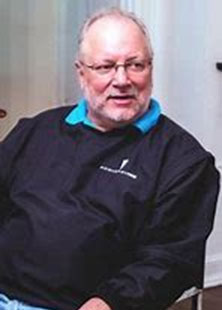
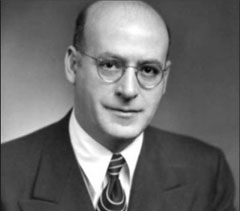
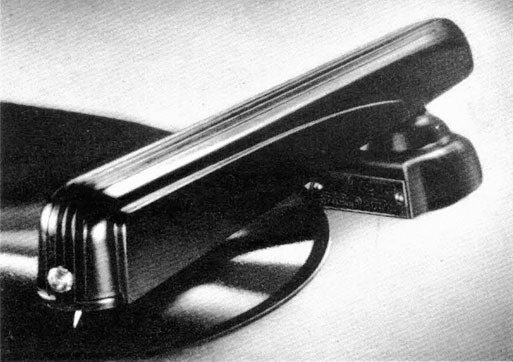
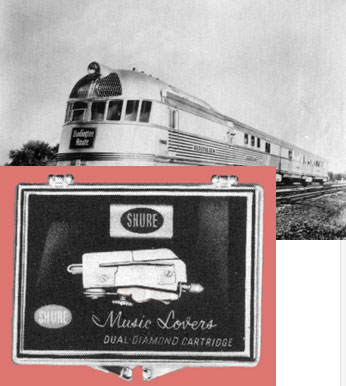
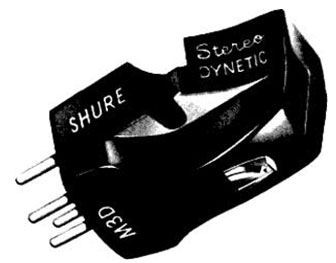
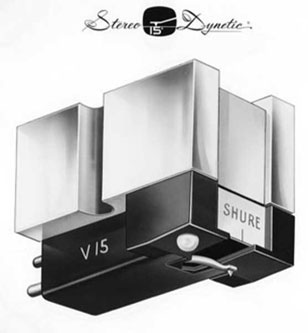
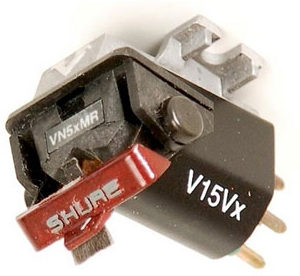
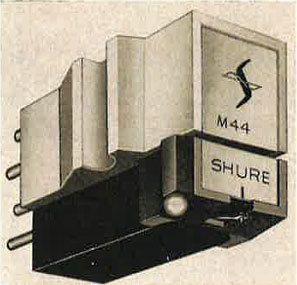
A possible historical side note on the Shure M95 and V15 and perhaps others. Both have bad press in some circles; the following perhaps some illumination on why.
On the owners pamphlet for both cartridges there is a two trace overlaid frequency response curve for the cartridges. One fairly flat (faint dotted line) and a heavier one that shows a tipped up top end.
The tipped up top end response is I think what most of the negative comments reflect.
There is a notation toward the end of the pamphlet that calls out loading on the flat response as 47k-ohm and relatively high parallel capacitance that wouldn’t have been commonly applied. The tipped up response is a straight 47k-ohm load.
I’ve only had opportunity to try this experiment with a V15 and Jico stylus, but the results of adding 350 pf in parallel with 47k-ohm was pretty revealing….. and was spelled out in the company literature back in the 70’s as the preferred loading.
In the early 70’s I went happily from the Shure M44 to the M95ed to the V15 type II before falling in love with the Empire 1000ze/x
Fascinating.
Thank you
Shure M55e was introduced with exactly the same elliptical 2×9 stylus as the V15 Type I at a significant discount and the only difference in sound was a supposed cherry-picking of the V15 styluses, which is why I own a m55e (and a little-known radio shack V15. ). The m44 and m55 accept the same styluses and now you can get a Japanese copy of the m44 cartridge made by Jic.o